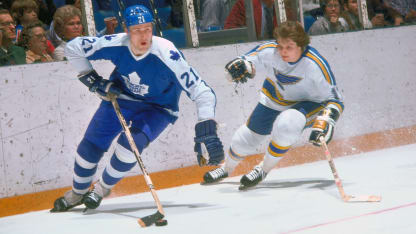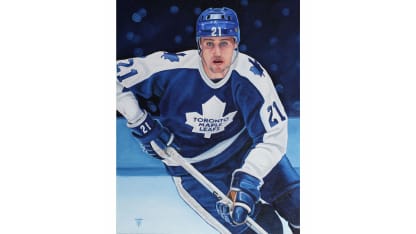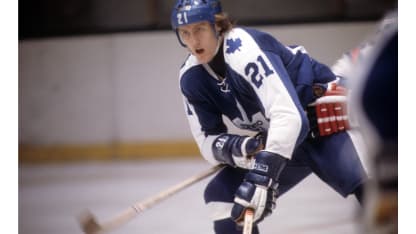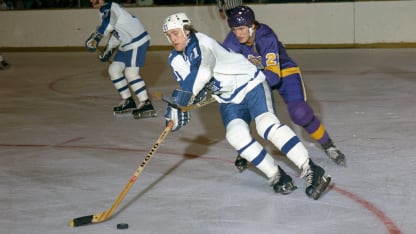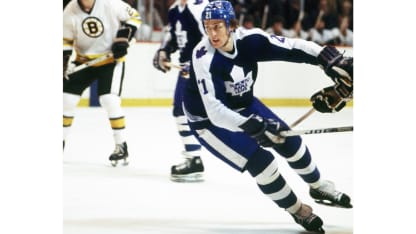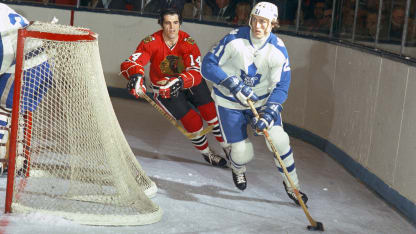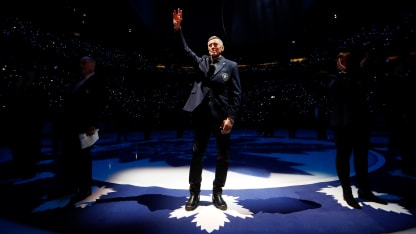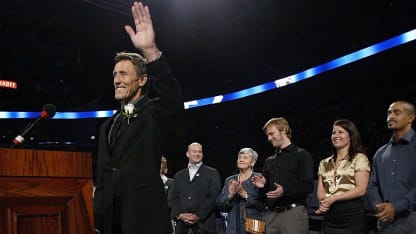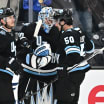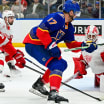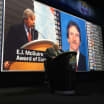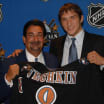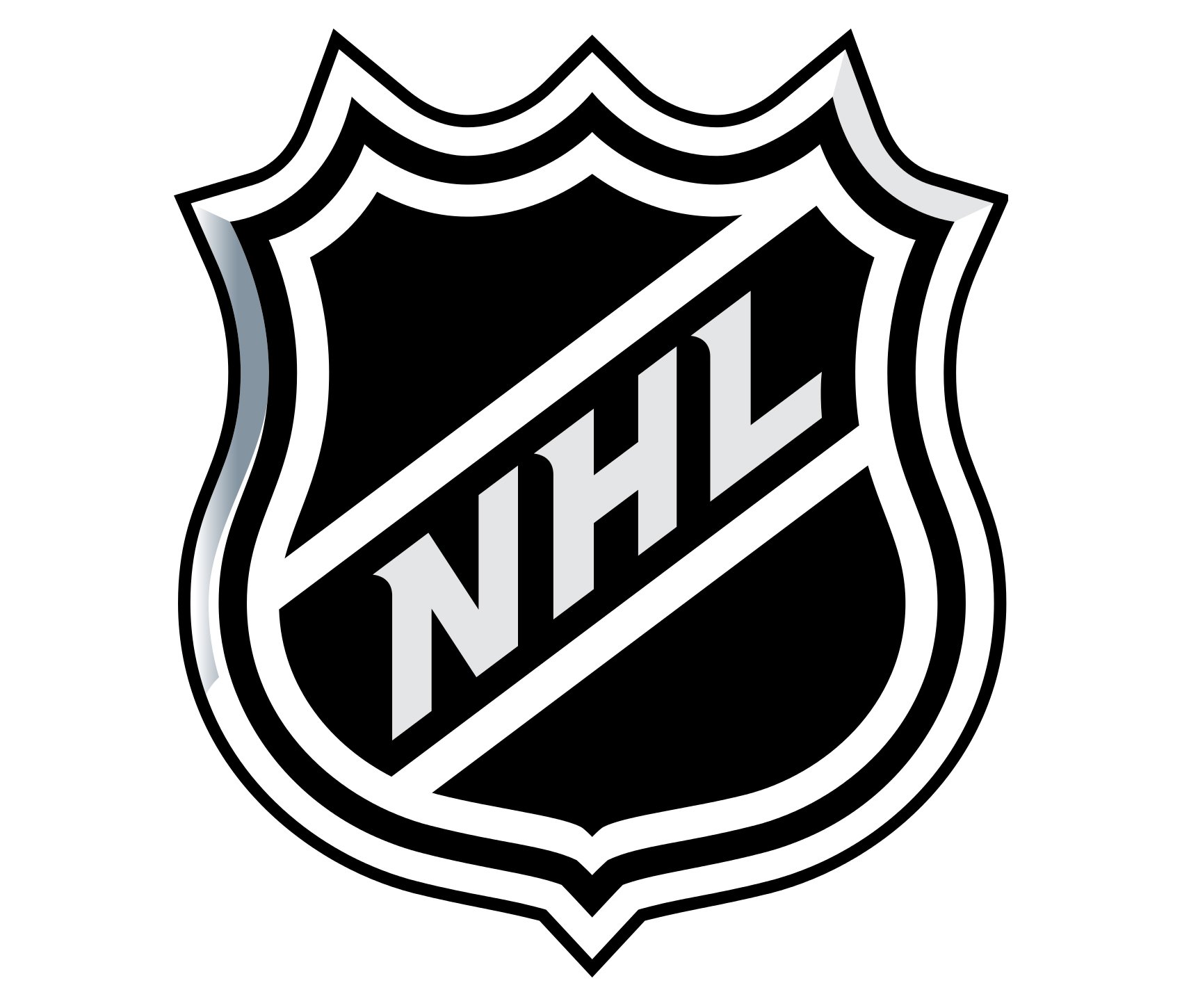After leaving the NHL in 1990, Salming returned home to play and appeared for Sweden in the 1992 Albertville Olympics. In 2008 he and Russia's Viacheslav Fetisov were named the defensemen on the IIHF Centennial All-Star Team, and in 1996, Salming received what he considers his greatest honor: enshrinement in the Hockey Hall of Fame.
"Going into the Hockey Hall of Fame, in Sweden they don't understand how big that is in Canada," Salming said. "I was so extremely happy about that. When they called me I was actually crying. I couldn't believe it.
"I thought I would never make it -- well, maybe later on -- but three years after I quit hockey I got in and that was really incredible."
Salming has continued to be honored in retirement.
A statue of Salming was unveiled on the Maple Leafs "Legends Row" outside Air Canada Centre in 2015, and Toronto raised his No. 21 to the arena's rafters in October, 2016.
"The banner up in the ceiling, and the statue," Salming said. "I felt never, ever would I get a statue. That's pretty cool.
"Basically when I'm gone, my grandkids and everybody can go there and say, 'I know that guy.' That's fantastic."
Toronto will never forget what Salming meant to the Maple Leafs. And European players will never forget what Salming's success in the NHL meant to them.
For more, see all 100 Greatest Players
